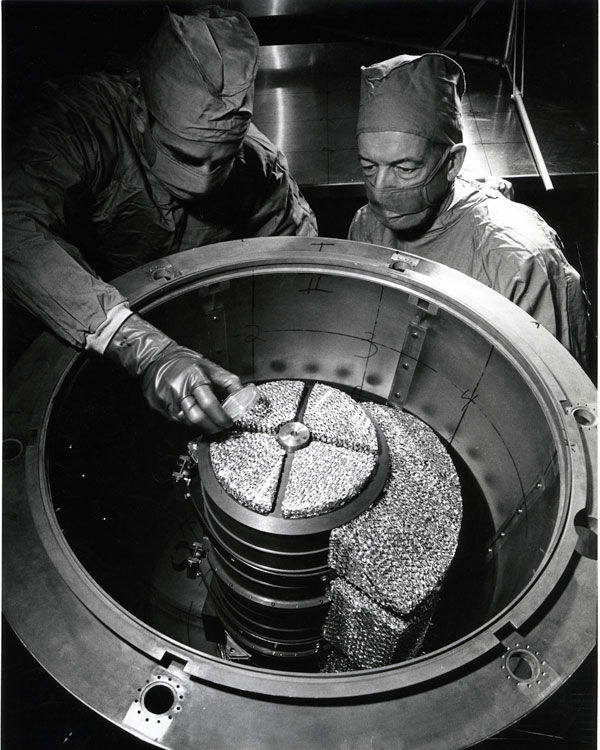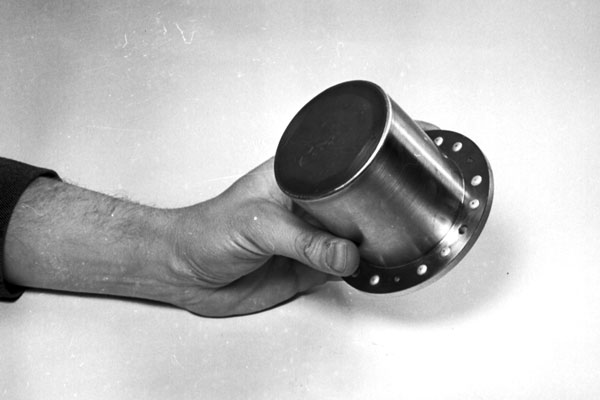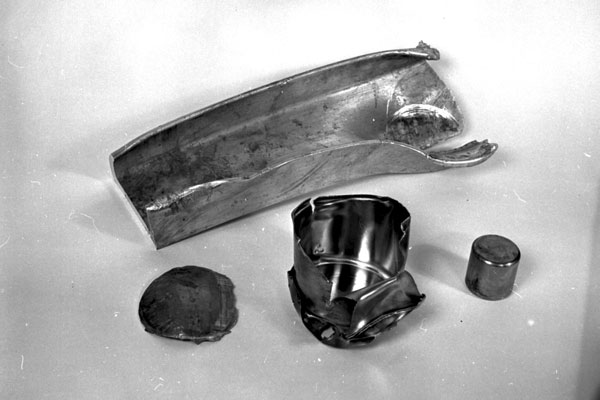Sandia scientists gave Apollo 11 mission a boost

Photos courtesy of Lab News Archives
On July 20, 1969, nearly 650 million people watched as Neil Armstrong took “…one small step for a man, one giant leap for mankind,” when the Apollo 11 mission landed the first man on the moon. This year marks the 50th anniversary of that mission, and Sandia was part of the team.
Sandia’s role in the mission was out of the spotlight, but important to the success of the science mission. Sandia scientists consulted with NASA on the planetary quarantine program that sterilized items sent into space to prevent Earth contaminants from ending up on other planets.
Sandia scientists also provided testing of the nuclear heaters designed by Mound Laboratories to keep the “moonquake” instrumentation warm and functioning during the cold, approximately two-week-long lunar nights. Using the rocket sled track and other environmental test facilities, scientists conducted heat, pressure, vibration and shock testing, simulating the environment that the units could encounter in service and during an accident.
For more on the history of Sandia’s involvement with the Apollo space program, see the Lab News special issue: Apollo 11 Anniversary
For the subsequent Apollo 12 mission, Sandia historian Rebecca Ullrich says Sandians provided technical direction for Systems Nuclear Auxiliary Power 27 development, and got to load the SNAP 27 plutonium 238 fuel capsule onto the landing module.
Rebecca also said that Sandia Labs Director John Hornbeck was appointed to NASA’s Aerospace Safety Advisory Panel in 1968. The panel was created in response to the Apollo 1 accident in 1967.
One could argue that the success of the space program benefited Sandia for years after the Apollo program. The space race propelled generations of young people into engineering fields, and Sandia and the nation benefited greatly from their inspired, hard work.

